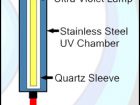
In my 20 years of experience in the field of water quality, I have heard many perceptions expressed by people regarding the water at their home or cottage. Some of these beliefs are inaccurate.
For some, the idea that their well water is clean, clear and safe is passed from generation to generation. For others, there has been no development on the lake for years and they believe the water must be safe. Often I hear that “my shore well is lake water as it is fed directly from the lake.” In new home construction I often hear, “When they drilled the well the test was good, it is deep and cannot have any bacteria.”
Many people believe the water is safe just the way it is. I believe this is the way many people want to see their water.
SEPTIC SYSTEMS
The most common perception I have observed is this: “My septic system is at the back of my house and the well is out front. It cannot contaminate my water as it is too far away.” This notion is commonplace for many people who live in rural “subdivisions” that have no municipal water and sewer services and are a grouping of homes side by side and back to back, each with a well and septic system. In reality, all septic effluent is discharged from the system through weeping tile into the ground. How it travels after entering the ground is subject to layers of soil, rock formations and the ground water table.
THE PUBLIC HEALTH UNIT
“I had the water tested at the health unit and everything is good: it passed the test.” This idea is also commonplace with many people never testing the water again after the initial test or unless the house is up for sale. The idea of a health-unit test being a good indicator of overall water quality is also common. Many perceive the test is for everything and that authorities would let them know if the water were not safe. They are surprised to learn the health-unit test is just a bacteria test for coliform and E. coli and not for arsenic, lead, chemicals, pharmaceuticals or any other water contaminant.
UV SYSTEMS
The “blue light” is commonly referred to as a drinking water system and sold as such by hardware stores, plumbers and a variety of other companies. It is a benchmark piece of equipment in a real estate transaction and the general perception is that “my water is safe if I have a UV installed.” The perception is if the “green light” is on, my water is safe to drink. A UV system provides only bacteria disinfection and does not physically remove anything from the water. It has minimal incoming water quality requirements that are often overlooked, and systems are often not maintained properly. Many people are not aware that the UV lamp/bulb is protected by a quartz sleeve that requires regular cleaning.
DRILLED WELLS
It is generally perceived that deep water sources – that is,100 feet and deeper – cannot contain bacteria as they are too far into the ground for bacteria to survive. This is something I have heard repeatedly and is a reason many people do not test their well water. Areas with heavy rock formations are subject to a series of deep fissures that can bring surface water deep into the ground to the water table. I have seen bacteria present in wells as deep as 200 feet.
BEST PRACTICE RECOMMENDATION
Whatever your customer’s perception of water is, ensure it is based on accurate information about the water source. The risks to water quality are diverse, with most contaminants invisible to the human eye. You cannot judge the quality by the taste, smell or colour alone. Have the customer contact a qualified water treatment professional for water testing and treatment options.
Jeff Wahl has 20 years of experience in the water treatment industry. He is the chief executive officer of Wahl Water and a water educator. For more information, contact Jeff at jeff@wahlwater.com.
Print this page

